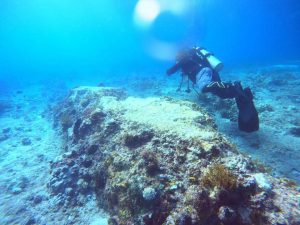 DAVAO CITY (MindaNews) – Six “empty” coronavirus disease (COVID-19) isolation centers have been temporarily closed in Davao City as active cases are slowly going down, which left several vacant spaces in the temporary treatment and monitoring facilities (TTMFs) of the local government.
DAVAO CITY (MindaNews) – Six “empty” coronavirus disease (COVID-19) isolation centers have been temporarily closed in Davao City as active cases are slowly going down, which left several vacant spaces in the temporary treatment and monitoring facilities (TTMFs) of the local government.
Dr. Ashley Lopez, City Health Office (CHO) acting head, said during his program over Davao City Disaster Radio (DCDR 87.5) that the occupancy rate at the TTMFs was reportedly at 19.5 percent while the Southern Philippines Medical Center (SPMC), the primary isolation unit for COVID-19 cases in the city, was at 47.51 percent as of Tuesday.
He said that at present, the city’s TTMFs in operation have been reduced to 12, with a total bed capacity of 1,200, from the original 18 facilities opened when COVID-19 cases peaked in the previous months.
At present, the local health official said the TTMFs that are functioning in the city have been reduced to 12, with a total bed capacity of 1,200, from the 18 facilities that were opened when COVID-19 cases peaked in the previous months.
Department of Health (DOH)-Davao reported 37 new cases in the city as of April 13, bringing the total cases to 14,098 with 370 active, 13,046 recoveries, and 682 deaths.
Lopez added that the new COVID-19 cases with moderate, severe, and critical conditions will be referred to the SPMC to free up the private hospitals of active cases, and to contain the risk of transmission in just one area.
“For the meantime that we still have few patients, they will be referred to the SPMC. What’s the advantage if we are able to contain it in one isolation unit or at the SPMC? In case the new variant is present in any of the COVID-19 patients, we can easily contain it there,” he said.
The last three patients admitted in a private hospital were discharged on Tuesday, he said.
Last Monday, Mayor Sara Duterte said TTMFs must be “ready, clean, and complete” for patients.
The local chief executive emphasized the need for heightened surveillance testing in the communities to stem the spread of COVID-19.
She feared that the hospitals in the city may not be “ready” to handle a surge of similar intensity experienced in the National Capital Region.
Duterte said it is better to address the transmission of COVID-19 immediately than neglecting it like a “ticking time bomb” and find out later that the spread of the virus is already serious to the point of congesting hospitals with severe and critical cases.
She said without the heightened testing, cases in the city will surge in two to four months’ time.
Lopez said 57 out of the 3,000 individuals tested during the surveillance swabbing conducted in various areas turned out positive for the infection. Of the cases detected, he said 90 or 95 percent were asymptomatic.
Under Executive Order 18, Duterte ordered the monitoring of persons suffering from influenza-like illness (ILI) like cough, fever, and colds in the communities.
She also directed the health authorities to make a regular schedule of surveillance swabbing in business and commercial establishments; public places, including, among others, wet markets, supermarkets, and stores; government offices; private offices and agencies; closed facilities such as Bureau of Jail Management and Penology, Bahay Pag-asa, Home for the Aged, and orphanage; and other barangays and areas deemed high risk by the City Health Office.
Under Executive Order 20, the local government ordered “mandatory swab testing” of all close contacts, including the second and third generation contacts, of an index case.
Individuals are considered “first-generation” close contacts or F1 when they come in direct contact with an active case; “second-generation” or F2 are the persons who have direct contact with F1; and “third-generation” or F3 are the close contacts of F2. (Antonio L. Colina IV / MindaNews)


